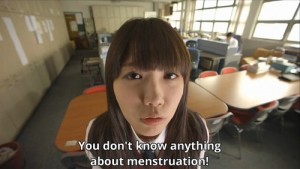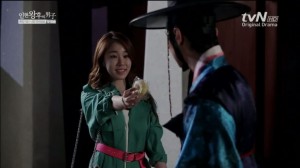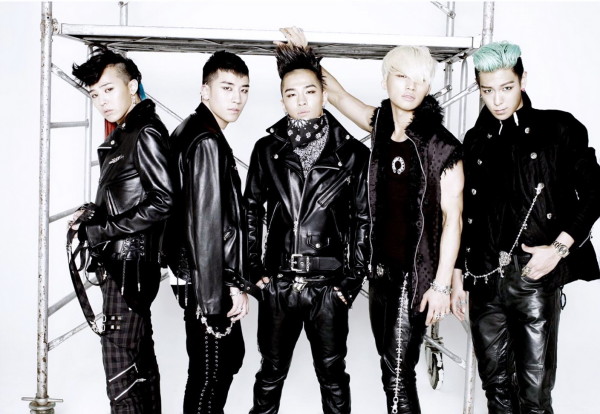With the holidays right around the corner, I’m sure many of you guys are digging out old family recipes for fruit cakes and eggnog. However, not every recipe shared has to be for something edible — so I’ve decided to share my top-secret recipe for the perfect Korean drama with all of you. After three years of watching these things, I’ve finally unlocked the secret to creating a flawless 20-hour life-sucking drama. Who knows, maybe one day one or two of you will be writing scripts for KBS! So if you have a little extra time to yourself this holiday break (and a couple million dollars from Grandma), try this recipe out for kicks.
Ingredients:
 A lovable, relatable heroine with a sprinkling of personality flaws (gutsy, cute, spunky, and tomboyish are all popular picks for character traits right now)
A lovable, relatable heroine with a sprinkling of personality flaws (gutsy, cute, spunky, and tomboyish are all popular picks for character traits right now)- A slightly-less lovable Prince Charming for our heroine with more than just a sprinkling of flaws (handsome, arrogant spoiled brats are quite trendy right now, but other options include shy and serious, not-so-gutsy, and obnoxious womanizer)
- A visually pleasing setting and time period located somewhere in South Korea, mostly Seoul (i.e. high school, college, hospital, imperial palace, you name it)
- A flawless second male lead
- One or two supportive best girlfriends for our heroine
- A strong antagonist (be it evil parent, jealous ex-girlfriend, whatever — get creative!)
- One of those annoying female characters that helps the male lead realize his feelings for the female lead
- A central theme the drama is centered around (whether it be cooking, school, work, revenge, a competition, a quest to become a K-pop idol, gender-bendering, etc.)
- Plenty of rain scenes
- A satisfying number of kiss scenes
 One (or more) broody shower scenes for our male lead
One (or more) broody shower scenes for our male lead- One airport scene
- One hospital scene
- A bucketful of tears
- Enough laughter to go around
- Lots of soju for those midnight piggyback rides
- A good OST chock-full of ballads and upbeat pop numbers
- A couple of tragedies (car accidents, twisted family relations, cancer, and memory loss are your go-to ones — feel free to use all if you are trying to make a melodrama)
Steps:
1. Set up your back story. Introduce your heroine, hero, and antagonist separately (unless you’re aiming for the childhood friends turned lovers route). Use child actors if needed. Make sure to include the important aspects of their respective lives and show the audience their flaws. Tie in the central theme. If you bring in the theme too late, it will feel unnatural and out of place. Make sure you have a hook that will keep viewers coming back for more! I find that time traveling, weddings, funerals, and small conflicts are great hooks. Either way, it’s best to keep it either light and funny or dramatic enough to make people curious.
 2. Have your two main characters meet somehow in a memorable way. Usually this initial encounter inspires negative feelings toward each other. Take that a step further and establish the hate part of a love-hate relationship. After all, the line between the two is a fine one — it won’t be hard to make the transition! Refer to love-hate relationships in Shining Inheritance, Boys Over Flowers, Goong, Full House, or My Name is Kim Sam-soon for guidance if needed.
2. Have your two main characters meet somehow in a memorable way. Usually this initial encounter inspires negative feelings toward each other. Take that a step further and establish the hate part of a love-hate relationship. After all, the line between the two is a fine one — it won’t be hard to make the transition! Refer to love-hate relationships in Shining Inheritance, Boys Over Flowers, Goong, Full House, or My Name is Kim Sam-soon for guidance if needed.
3. Set up a situation that would force the main characters to actively become a part of each other’s lives. Play with the hate aspect of their relationship but gradually work in affectionate moments. Don’t put too many in so it gives the audience something to look forward to. At the same time, have your heroine develop a positive relationship with the second lead.
4. One of the main characters needs to realize his/her feelings at this point. Typically it’s the male character who does. He begins to feel competitive toward the second lead. Work in a brooding shower scene. Make the presence of your antagonist more well-known at this point.
5. Your hero needs to start actively pursuing his girl at this point. This is crucial to the success of your drama! Have a kiss scene or two but also set up obstacles for their relationship as well. Bring in the “other girl” and step up the game of the second lead. You’re going to need to spend a few episodes building up the angst.
 6. Make sure the audience knows that there is a relationship (however tentative) between your leads. And then bring in your tragedy! Let misfortune strike hard — this is the tearjerker portion of your drama that will really set up the happy ending.
6. Make sure the audience knows that there is a relationship (however tentative) between your leads. And then bring in your tragedy! Let misfortune strike hard — this is the tearjerker portion of your drama that will really set up the happy ending.
7. Somehow love conquers all! Think of a clever (or not) resolution to your tragedy, whether it be having your hero watch his forgotten love jump into a swimming pool or forgetting his past feelings and starting anew with his lady, and end your drama on a hopeful note.
Voila! There you have it — the basic outline of a successful drama that will rock the ratings for sure. Note that there’s lots of room in there for you to put your own spin on things and don’t be afraid to experiment! Sometimes a quirky spin can really breathe life into an otherwise unoriginal K-drama.
(tvN, MBC, KBS)


